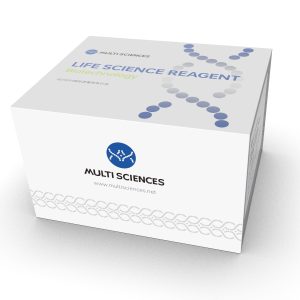HGNC ID: 10610
Target Abstract:
Chemokine ligand 11 (CCL11), also known as eosinophil chemokine (Eotaxin), is a small molecular weight cytokine in the CC chemokine family.Eotaxin is selectively recruited by inducing chemotaxis in eosinophils, and is therefore involved in metamorphic responses.Elevated expression of Eotaxin in plasma of both humans and mice is associated with its senescence. The plasma of current marijuana smokers contains higher concentrations of Eotaxin than that of former marijuana smokers and never-smokers, and schizophrenics also have higher concentrations of Eotaxin, a known inducer of schizophrenia.
CCL11 Target Infomation Overview
- Target Symbol: CCL11, C-C motif chemokine ligand 11
- Gene Groups: Chemokine ligands
- Alias: eotaxin; MGC22554
- Previous Names: SCYA11
- Alias Names: eotaxin-1; small inducible cytokine subfamily A (Cys-Cys), member 11 (eotaxin); chemokine (C-C motif) ligand 11
CCL11, C-C motif chemokine ligand 11 Target Infomation by Species
- Human
- Mouse
- Rat
Human CCL11 Target Information
- Target Symbol: CCL11, C-C motif chemokine ligand 11
- Alias:
- C-C motif chemokine 11
- chemokine (C-C motif) ligand 11
- eosinophil chemotactic protein
- eotaxin
- eotaxin-1
- MGC22554
- SCYA11
- small inducible cytokine subfamily A (Cys-Cys), member 11 (eotaxin)
- small-inducible cytokine A11
- NCBI_Gene: 6356
- UniProtKB: P51671
Human CCL11 Predicted Functions
Enables CCR3 chemokine receptor binding activity; chemokine activity; and protein dimerization activity. Involved in several processes, including eosinophil chemotaxis; positive regulation of GTPase activity; and positive regulation of actin filament polymerization. Located in extracellular region. Implicated in asthma; human immunodeficiency virus infectious disease; and hyperglycemia. Biomarker of several diseases, including cystic fibrosis; hyperglycemia; lung disease (multiple); nephrotic syndrome type 1; and ureteral obstruction.
Mouse Ccl11 Target Information
- Target Symbol: Ccl11, chemokine (C-C motif) ligand 11
- Alias:
- eotaxin
- Scya11
- small inducible cytokine A11
- NCBI_Gene: 20292
Mouse Ccl11 Predicted Functions
Predicted to enable CCR3 chemokine receptor binding activity; chemokine activity; and protein dimerization activity. Involved in several processes, including modulation of age-related behavioral decline; negative regulation of neurogenesis; and positive regulation of angiogenesis. Acts upstream of or within branching involved in mammary gland duct morphogenesis and mammary duct terminal end bud growth. Predicted to be located in extracellular region. Predicted to be active in extracellular space. Is expressed in embryo; endocardial lining; liver parenchyma; liver vasculature; and yolk sac blood vessel. Human ortholog(s) of this gene implicated in asthma; human immunodeficiency virus infectious disease; hyperglycemia; and multiple sclerosis. Orthologous to several human genes including CCL11 (C-C motif chemokine ligand 11).
Rat Ccl11 Target Information
- Target Symbol: Ccl11, C-C motif chemokine ligand 11
- Alias:
- C-C motif chemokine 11
- chemokine (C-C motif) ligand 11
- eosinophil chemotactic protein
- eotaxin
- Scya11
- small inducible cytokine A11
- small inducible cytokine subfamily A11
- small-inducible cytokine A11
- NCBI_Gene: 29397
- UniProtKB: P97545
Rat Ccl11 Predicted Functions
Enables chemokine activity. Involved in several processes, including ERK1 and ERK2 cascade; leukocyte chemotaxis; and response to interleukin-13. Located in extracellular space. Used to study allergic rhinitis; asthma; pleurisy; and pneumonia. Biomarker of several diseases, including allergic conjunctivitis; pneumonia; prostatitis; rhinitis; and type 1 diabetes mellitus. Human ortholog(s) of this gene implicated in asthma; human immunodeficiency virus infectious disease; hyperglycemia; and multiple sclerosis. Orthologous to several human genes including CCL11 (C-C motif chemokine ligand 11).

